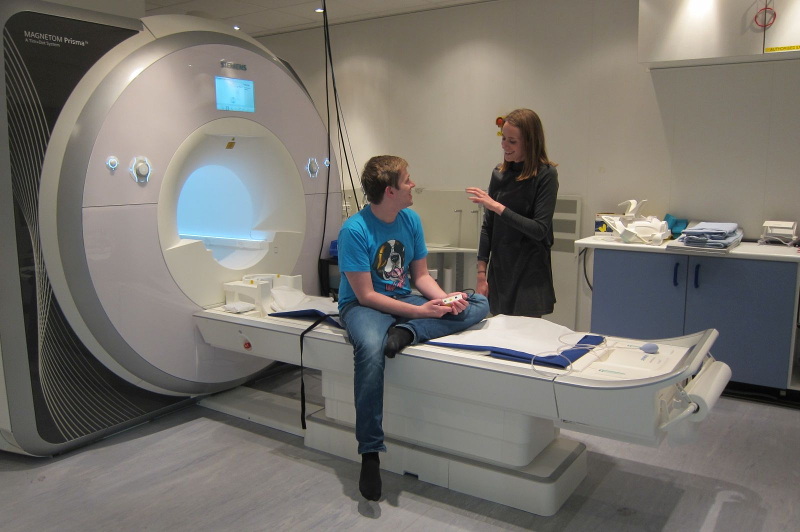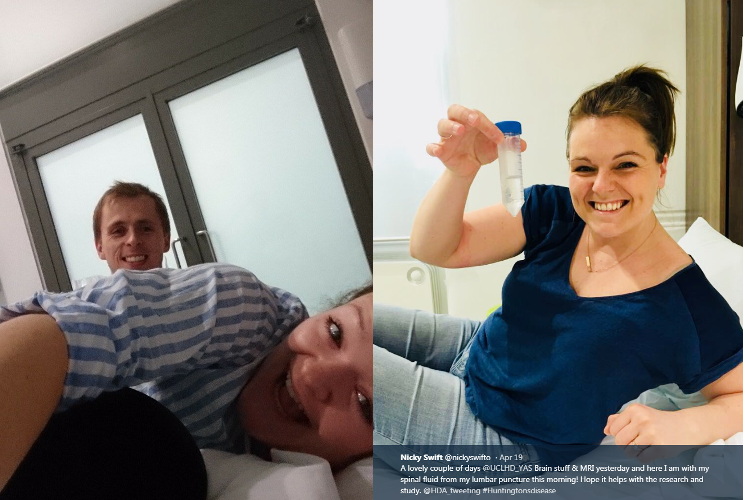
HD Young Adult Study defines the sweet spot: symptom-free with measurable changes
We know that HD-related changes can occur many years before symptom onset, but how early do those changes begin? A team of researchers set out to determine that with a new comprehensive study in pre-manifest HD young adults.

A new study headed up by Dr. Sarah Tabrizi, a pioneer in HD research, assessed pre-manifest HD young adults many years from predicted symptom onset with a battery of clinical tests. The goal of this study was to identify a sweet spot – a time when HD participants weren’t experiencing any observable symptoms, but when markers of disease progressing begin to show the earliest changes. This was a challenging task, but the HD researchers rose to the occasion!
Young Adult Study – assessing patients 24 years from predicted HD onset
As HDBuzz readers are undoubtedly aware, there is a bewildering array of trials of HD drugs planned and underway. A number of these drugs target the mutant HD gene, or the protein made from it, directly. To see if these approaches work, researchers need to find the right window of time in which to test their drugs.

The key question researchers are interested in understanding is: When is the best time to treat HD? Some researchers think that the best time to treat may be at the very earliest stages of HD – before any brain cells begin to die and before there has been any functional decline. But since we know emotional and psychiatric changes can occur even 10 to 15 years before symptom onset, no one was sure when the healthy baseline began to cross over into symptomatic onset – until now!
An team led by Dr. Tabrizi set out to try and identify the very earliest stages of HD – when patients are functioning at full capacity, but there’s some measurable marker of decline. That last bit is super important. There needs to be some sort of measurable change so that when therapeutic strategies effectively improve HD progression, researchers will be able to measure improvement even in the very earliest stages of HD.
The name of Dr. Tabrizi’s study is the Young Adult Study, or HD-YAS. This study examined over 130 young adults that included HD gene carriers as well as individuals without HD, that were on average 29 years old. The participants that carry the HD gene were predicted to be about 24 years from onset. That makes this one of the earliest comprehensive assessments of pre-symptomatic HD gene carriers ever.
All participants were assessed using many, many tests designed to assess both cognitive and psychiatric components of patients. A few of these tests included brain imaging, blood collection, spinal fluid collection, assessment of cognition (planning, attention, memory), and psychiatric assessment (depression, anxiety, behavior). So these participants were quite thoroughly examined!
Cognitive and psychiatric function are preserved, but NfL is increased
“This means that no matter how hard we look at people carrying the HD mutation this far from onset, there really is a time in which even the most sensitive tests don’t reveal any changes, compared to people without the mutation”
The first major component of the study they described was the cognitive and psychiatric assessment. What they found was amazing: Of all the cognitive and psychiatric tests performed on HD gene carriers and individuals without HD (and there were lots of different tests), none of them showed any difference – wow! This means that no matter how hard we look at people carrying the HD mutation this far from onset, there really is a time in which even the most sensitive tests don’t reveal any changes, compared to people without the mutation.
This study also examined the sizes of various parts of the brain to determine how early changes in these regions may be occurring. One of the primary areas of the brain affected by HD is the striatum, which is made up of two halves called the putamen and caudate. These areas of the brain shrink as HD progresses due to the loss of cells that occurs in these regions over time.
While there was no change in caudate size, there was a reduction in putamen size in the people carrying the mutation, called the preHD group. But this difference was small and didn’t match with predicted years from onset in the preHD group, which means further study is needed to understand what this change means. No other brain regions that were assessed showed size differences.
The last major component of this study looked at biomarkers – measurable markers in samples from patients that change with disease progression. Identifying biomarkers in HD patients is critical for tracking disease progression and for measuring the effects of treatments.
Currently, one of the most reliable biomarkers we have for HD is changes in the levels of a protein called neurofilament light, or NfL. While it can be measured in blood plasma, examining levels of NfL in CSF appears to be more sensitive and accurate. We’ve written about NfL, and what role it might play in future HD trials here.

HD-YAS found that NfL levels in both blood and spinal fluid were increased in the preHD group. Since NfL levels increase with injury to brain cells, this indicates that there is some level of stress on the brain occurring in the preHD group, even this far from symptom onset.
While this may seem like a negative finding, it’s actually really good! Even though NfL levels are elevated, study participants aren’t experiencing any cognitive of psychiatric effects because of it. This means that a timepoint has been established where HD mutation carriers have totally normal function, but there are biomarker tests that can still be measured to determine if therapeutics would be effective. This is exactly what HD-YAS set out to determine!
What do these findings mean for the field and future trials?
Overall, HD-YAS was able to conclude that NfL levels in the spinal fluid may be the earliest detectable event in HD before symptom onset. These researchers also found that movement, cognitive, and psychiatric function remain unchanged, even up to 24 years from predicted onset – amazing news!
When this study is combined with other large studies, like TRACK-HD, PREDICT-HD, and ENROLL-HD, a comprehensive, predictive map begins to take shape. Thanks to HD-YAS, and studies that came before it, we now know that the earliest, subtle, functional changes begin sometime between 24 to about 15 years from symptom onset.
“While we all hope that HD patients will regain functional capacity even after symptomatic onset, that’s just not something we know based on the current data. But if we discover that HD patients need to be treated before symptoms begin to appear, we now know exactly when that is based on HD-YAS”
The findings from HD-YAS are an important discovery for the field, indicating the time at which a healthy baseline exists in HD individuals. If researchers learn that the best time to treat HD patients is prior to any sort of symptom onset, we now have an idea of when that time would be. This will be critically important for designing future clinical trials aimed at preventing HD, rather than treating it.
Have you missed the boat?
It’s important to note that these results don’t mean that lowering HTT after symptom onset won’t have an effect. That question is still very much up in the air. The full set of results from the Phase III tominersen trials will help researchers understand if patients can regain cognitive, psychiatric, and motor function once they begin to decline. Following the progress of the brave trial participants as they continue to take tominersen will be critical in determining if follow-up trials are needed.
While we all hope that HD patients will regain functional capacity even after symptomatic onset, that’s just not something we know based on the current data. But if we discover that HD patients need to be treated before symptoms begin to appear, we now know exactly when that is based on HD-YAS. This allows researchers to stay one step ahead and hit the ground running, saving valuable time.
Learn more
For more information about our disclosure policy see our FAQ…


